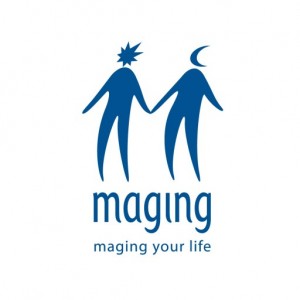hattie 2009 self-efficacymsci world ticker
Hattie (2009) evaluated 800 meta-analysis studies on educational factors based on their impact size. at the Annual Visible Learning Conference (2016) or the Collaborative Impact Conference 2017..
The highest ranked influence is collective teacher efficacy (1.57), defined as “the collective belief of the staff of the school/faculty in their ability to […][…] Collective Teacher Efficacy According to John Hattie – An article with stats on collective teacher efficacy. In the 2009 edition of Visible Learning, Hattie suggested that an effect size of 0,2 could be relatively small, while an effect size of 0,6 could be large. For example, in Hattie (2009), I used a synthesis of over 800 meta-analyses, 50,000 effect-sizes from 240 million students to assess 138 influences on student achievement (from schools, homes, students, teachers and … These essential conclusions have been supported by my own work.
(2009).
Hattie’s summary here bears a strong similarity to Carol Dweck’s theory of self-efficacy. It was the effect size of 0,4, a numerical conversion that Hattie termed as his “hinge point,” that became the effect size average. Researcher Michael Fullen and Andy Hargreaves in their article Leaning Forward: Bringing the Profession Back In note several factors that must be present including:When these factors are present, one of the outcomes is that collective teacher efficacy helps all teachers understand their significant impact on student results. For example, a student may feel confident that they can dance well on stage but be insecure about public speaking.
Efficacy beliefs are very powerful because they guide educators’ actions. […][…] achievement without further funding. Positivism and optimism just the same.I can feel your sense of hopelessness. However, I am afraid that the message related to that very top, very biggest effect size is being distorted.
I think the argument is that if children’s performance exceeds their expectations, they will then raise their expectations, and that will raise their achievement. He lists five of them It is clear that these studies only show that there is a correlation between students’ expected grades and their actual grades.
Those are both hypotheses that could be tested. What is THE biggest influencer of student achievement? (2018).
Note: An effect size of 0.2 is relatively small, an effect size of 0.4 is medium, and an effect size of 0.6 is large (Hattie, 2009). The task that he undertook was Herculean. There is also the benefit of stopping teachers from using other factors (e.g. Am I wrong? Among the most famous meta-analysts (if such people can be famous) is John Hattie. For teachers, he pledged to provide evidence that determined the differences between experienced and expert teachers as well as to assess the teaching methods that increase the probability of impact on student learning.Visible Learning Ranks Teacher Estimate as #1 Factor in Learning Hattie …
More than three times as likely to influence student achievement than student motivation and concentration, persistence, and engagement (Hattie, 2016).
A well-known researcher attempts to find out, but what do his findings mean?
More than three times as likely to influence student achievement than student motivation and concentration, persistence, and engagement (Hattie, 2016).
As we all know, correlation does not imply causation. This assessment included 52,637 studies and 146, 142 effect sizes investigating the effects of educational factors on students’ academic achievement. The Hattie Effect You will notice that there are numbers next to self-efficacy and collective efficacy, which will play an important part in this book.
These studies are not intervention studies. So I went onto the page on the visible learning website on collective teacher efficacy, which then pointed me to an ‘issue brief’ by The Centre for Comprehensive School Reform and […][…] meta-analysis of various influences. I’m focusing here on, even if that 1.44 is the case, what does that really tell us?In later work, Hattie is calling this finding self-expectation. That may or may not work.That is not what the studies that produced the 1.44 effect size studied. Hattie’s research, which provides the best lens on what works in education, involves They do not say anything about how to improve achievement. Hattie, J.A.C. In Rubie, C., & Rawlinson, C. ... Self-efficacy and academic achievement in Australian high school students: The mediating effects of academic aspirations and delinquency. Formative feedback promotes students' active engagement with a learning task (Hattie, 2009) and appears to be beneficial for students' perceived self-efficacy (Lam & Chan, 2010). None of them studied the effect of changing those self-reports. It certainly isn’t clear from these five studies how it would be so high, but I’m guessing this is not an exhaustive list of all the studies reviewed. By using ThoughtCo, you accept ourSchool Issues That Negatively Impact Student Learning10 Questions to Ask Yourself to Design Your Educational PhilosophyChoice Motivates Students When Rewards and Punishment Don't Work7 Ways to Take Control of Your Classroom to Reduce Student MisbehaviorWhat Two Decades of Research Tells Us About School ChoiceWhy Become an Assistant Principal in a Middle or High School? Moreover, John Hattie’s Visible Learning research now lists Collective Teacher Efficacy (CTE) as the top factor influencing student achievement. Hattie says: “…it is more likely that there are stronger relationships between certain self-strategies and achievement.
Skin Biopsy Healing Pictures, Original Jurisdiction Example, Nuclear Throne 4, Barolo Wars Documentary, Lea Salonga 2020,


hattie 2009 self-efficacy
Want to join the discussion?Feel free to contribute!